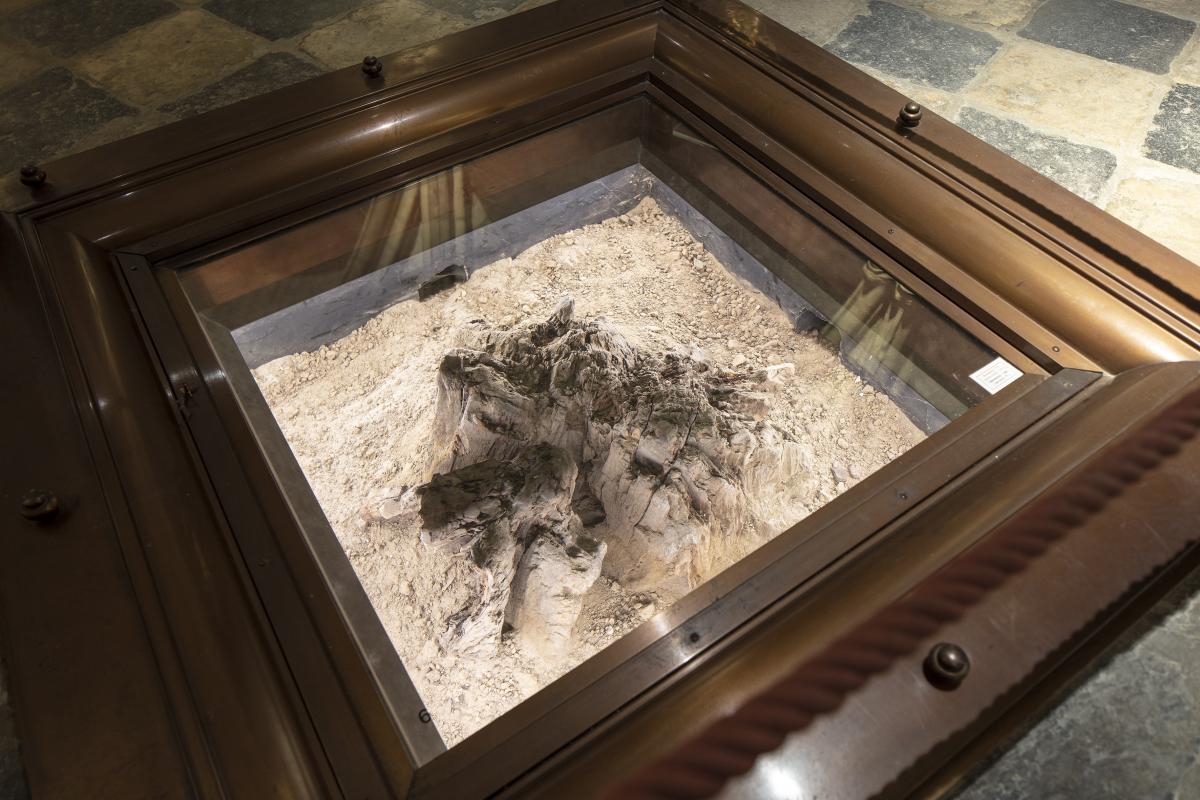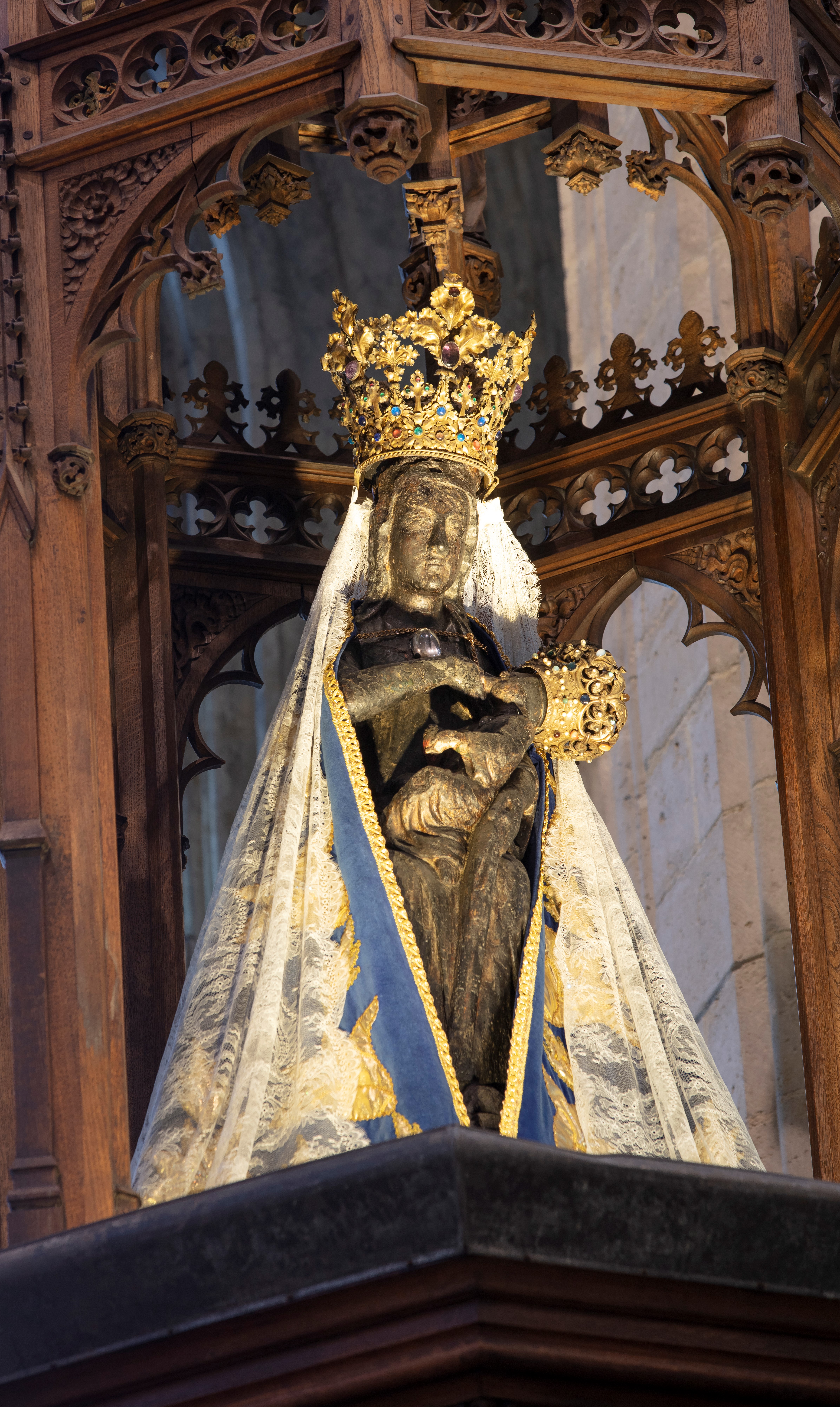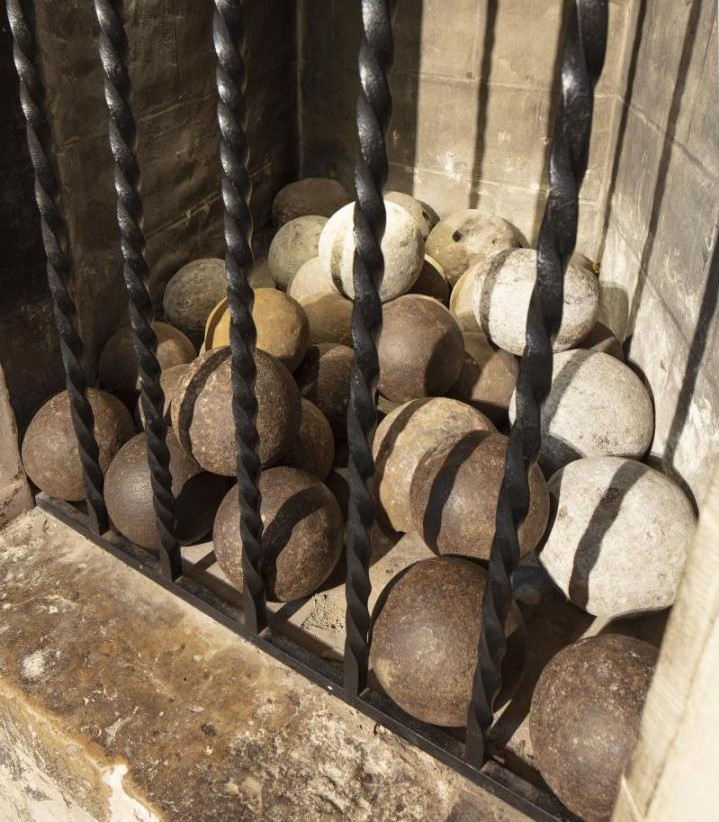Seventh century: the first church
The remains of a tree trunk can be found in the crypts of the gothic Basilica of St Martin. According to some historians, this tree was a Celtic shrine in pre-Christian times, before being Christianised by missionaries. The fact that Halle's church is devoted to St Martin supports that theory. St Martin was an extremely popular saint in the early days of the Christian church, and according to legend, he once felled a tree that was being used as a shrine during his missionary work. To convince the local population of the Christian faith, he refused to budge from his spot under the falling tree and caused it to drop beside him through the force of prayer. This story may have been a persuading factor for the people of the Halle region at the time, and may be the reason why this church is dedicated to St Martin. The remains of the tree trunk can still be seen in the crypts of the basilica.
Halle's first church was built around 635 by Woubert and Berthilde. Woubert had connections to the court of the Merovingian king Chlothar II and served as lord of the Halle estate. The church is believed to have been built near a well, and near a tree that held an image of Our Lady, according to legend.
Fourteenth century: Chapel of Our Lady and Brotherhood of Our Lady of Halle
In 1335, construction started on the gothic Chapel of Our Lady, the precursor to the current Basilica of St Martin.
In 1328, Edward III of England was vying for the French throne alongside Philip VI of France, as the French king Charles IV did not leave any heirs. The French nobility favoured Philip. Initially, Edward III also recognised Philip as king of France, but in 1337, he suddenly changed his mind. He withdrew his recognition, claimed Philip was no more than the Duke of Valois and attacked the country.
In 1337, the English king Edward III formed an alliance against the French king in Halle. This alliance is regarded as one of the causes of the Hundred Years' War. Shortly afterwards, in 1344, the Brotherhood of Our Lady of Halle was founded. Brotherhoods are ecclesiastically approved associations set up by worshippers dedicated to charitable causes, the beautification of masses and processions and so on. The Golden Book of the Brotherhood is still held in the crypts of the Basilica of St Martin, and its first few pages contain a list of names of the allies of Edward III.
The aim of the Brotherhood of Our Lady of Halle was to promote the veneration of the Black Madonna of Halle. There were various Brotherhoods of Our Lady of Halle around the world, each dedicated to spreading, preserving and passing on her story. The Brotherhood of Our Lady of Halle is one of the oldest brotherhoods in Belgium, and still exists to this day.
In 1267, the Count of Hainaut donated a sculpture of Our Lady to the city of Halle. The sculpture was part of the inheritance Sophie of Thuringia had received from her mother, Elizabeth of Hungary. Thanks in part to this sculpture, the church became a centre for worship of Our Lady and grew into a pilgrimage site known far and wide. In the years that followed, the church was inundated by thousands of pilgrims who wanted to admire the sculpture.
1341-1409: the church is built
In 1341, the first stone of a new church in the gothic style was laid. The finished church was consecrated in 1409, though work on the tower continued until 1470. The baptistry and Trazegnies chapel, both of which are gothic, date back to 1440 and 1467 respectively. The baroque sacristy was built in the seventeenth century.
1404: Philip the Bold dies in Halle
Philip the Bold was born on 17 January 1342 in Pontoise as the fourth and youngest son of the French Valois king John II. He would go on to become the first Duke of Burgundy in the Netherlands. He died at the inn formerly known as Het Hert, opposite the church of St Martin, on 27 April 1404. His innards are buried in the treasury.
1410: consecration and siege
The Basilica was officially consecrated in 1410 by the Bishop of Cambrai at the time. Inside the Basilica, you'll see the cannonballs that Our Lady of Halle, the Black Madonna, allegedly caught in her cloak during the siege by Philip of Cleves, leader of the Flemish Revolt, on 24 June 1489. According to legend, its the traces of gunpowder from these cannonballs that lend the Madonna her black appearance. Hundreds of pilgrims continue to visit her to this day.In 1946, the church was officially made a basilica. It has recently been restored, and its popularity as a pilgrimage site shows no signs of waning.




